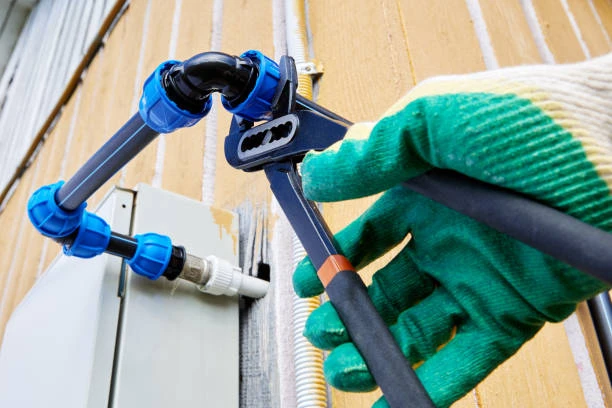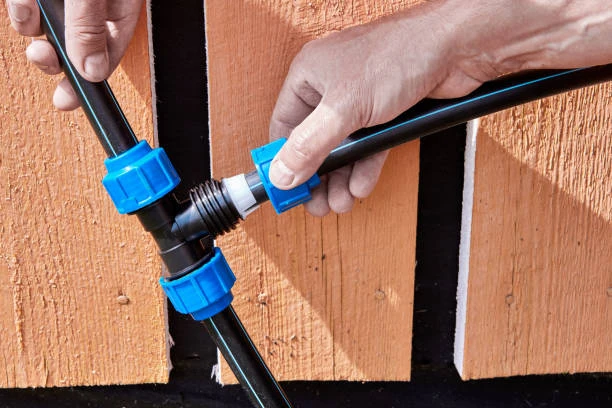When it comes to plumbing and infrastructure, selecting the right materials is crucial for ensuring longevity and performance. Polyethylene pipe fitting have gained popularity due to their durability, flexibility, and resistance to corrosion. However, not all polyethylene pipe fittings are created equal. This guide will help you understand how to choose quality polyethylene pipe fitting, ensuring your projects are both efficient and reliable.
Understanding Polyethylene Pipe Fittings
Polyethylene pipe fittings are components used to connect, redirect, or terminate polyethylene pipes in various applications, including water supply, gas distribution, and sewage systems. Available in various shapes—such as elbows, tees, and reducers—these fittings must meet specific standards to ensure optimal performance.
1. Material Quality
The first step in choosing quality polyethylene pipe fitting is to assess the material used. High-density polyethylene (HDPE) is the most recommended choice. HDPE offers excellent resistance to chemicals, moisture, and UV radiation, making it suitable for both indoor and outdoor applications. Always check the manufacturer’s specifications to ensure the fittings meet industry standards, such as ASTM (American Society for Testing and Materials) or ISO (International Organization for Standardization) certifications.
2. Pressure Rating
Every polyethylene pipe fitting comes with a designated pressure rating, which indicates the maximum pressure the fitting can safely handle. It’s essential to select fittings with pressure ratings that align with the specific needs of your project. For instance, if you’re working with a high-pressure water supply system, ensure the fittings can withstand those pressure levels without risk of failure.
3. Compatibility with Pipes
Another critical factor is the compatibility of the polyethylene pipe fitting with the pipes you plan to use. Ensure that the fittings match the diameter and type of the polyethylene pipes, whether they are standard SDR (Standard Dimension Ratio) or DR (Dimension Ratio) types. Mismatched fittings can lead to leaks and system failures, so verifying compatibility is vital.
4. Manufacturer Reputation
Selecting fittings from reputable manufacturers can significantly impact the quality of your polyethylene pipe fitting. Established manufacturers often adhere to strict quality control measures and industry standards. Research reviews, seek recommendations, and look for certifications that demonstrate the manufacturer’s commitment to quality. Investing in products from trusted brands can save you time and money in the long run.
5. Inspection and Testing
Before finalizing your purchase, conduct a thorough inspection of the polyethylene pipe fitting. Look for signs of defects, such as cracks, warping, or inconsistent wall thickness. Quality fittings should have a smooth finish, with no visible imperfections. Additionally, some manufacturers conduct testing for pressure resistance and chemical compatibility; inquire about these tests to ensure you’re making a wise investment.
6. Availability of Technical Support
Quality manufacturers often provide excellent customer support, which can be invaluable during the selection and installation process. Ensure that the manufacturer offers technical resources, such as installation guides and troubleshooting assistance. A reliable support system can help you avoid costly mistakes and ensure that your piping system functions optimally.
7. Price vs. Quality
While it may be tempting to choose the cheapest option, remember that quality often comes at a price. Inexpensive polyethylene pipe fitting may save you money upfront but can lead to costly repairs and replacements in the future. Instead, focus on balancing price with quality. Invest in fittings that offer long-term durability and performance, reducing the risk of failures.
8. Environmental Considerations
As environmental concerns grow, consider the sustainability of your polyethylene pipe fitting. Many manufacturers are now producing eco-friendly polyethylene fittings that are recyclable and have a lower carbon footprint. Choosing sustainable options not only helps the environment but also aligns with modern construction practices that prioritize sustainability.
9. Installation Requirements
Different polyethylene pipe fitting may have varying installation requirements. Some fittings might require specific tools or techniques for proper installation. Before making a purchase, consider your team’s expertise and the tools available. Choosing fittings that are easy to install can save both time and labor costs, making the overall project more efficient.

10. Long-Term Performance and Maintenance
Finally, consider the long-term performance and maintenance of the polyethylene pipe fitting you choose. High-quality fittings typically require less maintenance, reducing operational costs over time. Look for products that offer warranties or guarantees, as these can indicate the manufacturer’s confidence in their product’s durability.
Conclusion
Choosing quality polyethylene pipe fittings is essential for ensuring the success of your plumbing or infrastructure projects. By considering factors such as material quality, pressure ratings, manufacturer reputation, and installation requirements, you can make informed decisions that lead to optimal performance and longevity. Investing time in selecting the right fittings will ultimately save you money and headaches in the long run.
FAQs
- What materials are used in polyethylene pipe fitting?
- Polyethylene pipe fittings are typically made from high-density polyethylene (HDPE), known for its durability and chemical resistance.
- How do I determine the pressure rating for fittings?
- Check the specifications provided by the manufacturer, which will indicate the maximum pressure the fittings can handle safely.
- Can polyethylene pipe fitting be used for gas distribution?
- Yes, polyethylene pipe fittings are commonly used in gas distribution systems due to their resistance to corrosion and chemicals.
- What should I look for when inspecting polyethylene pipe fitting?
- Look for defects such as cracks, inconsistent wall thickness, and a smooth finish to ensure quality.
- Are polyethylene pipe fittings recyclable?
- Yes, many polyethylene pipe fittings are made from recyclable materials, making them an environmentally friendly option.


















